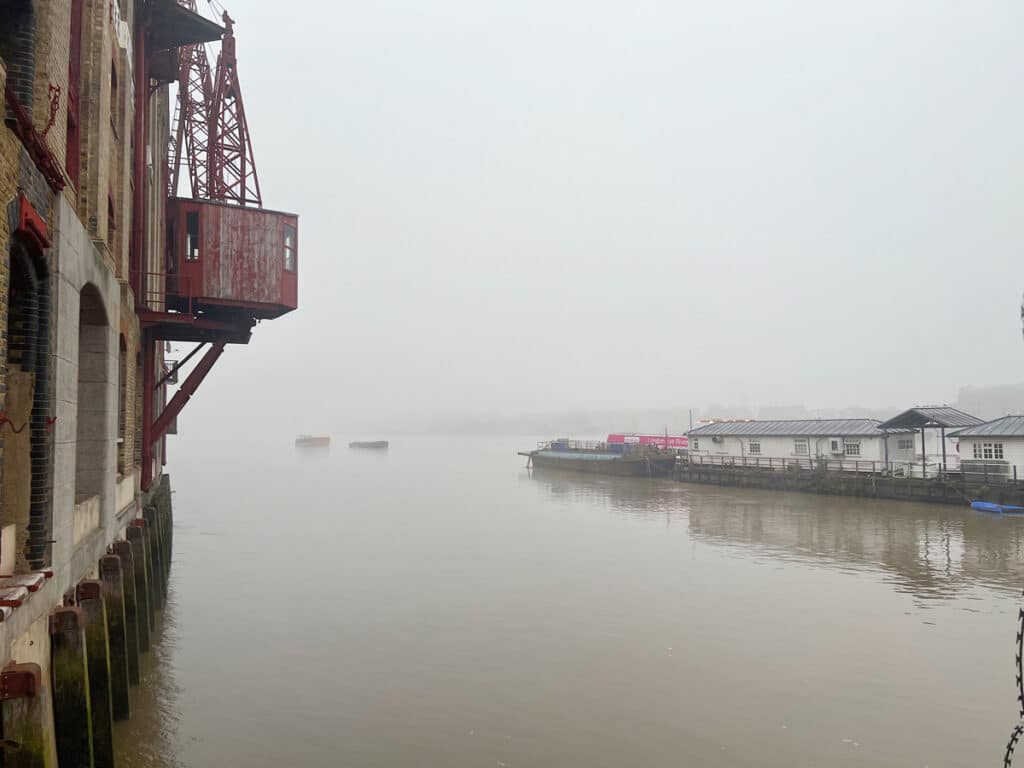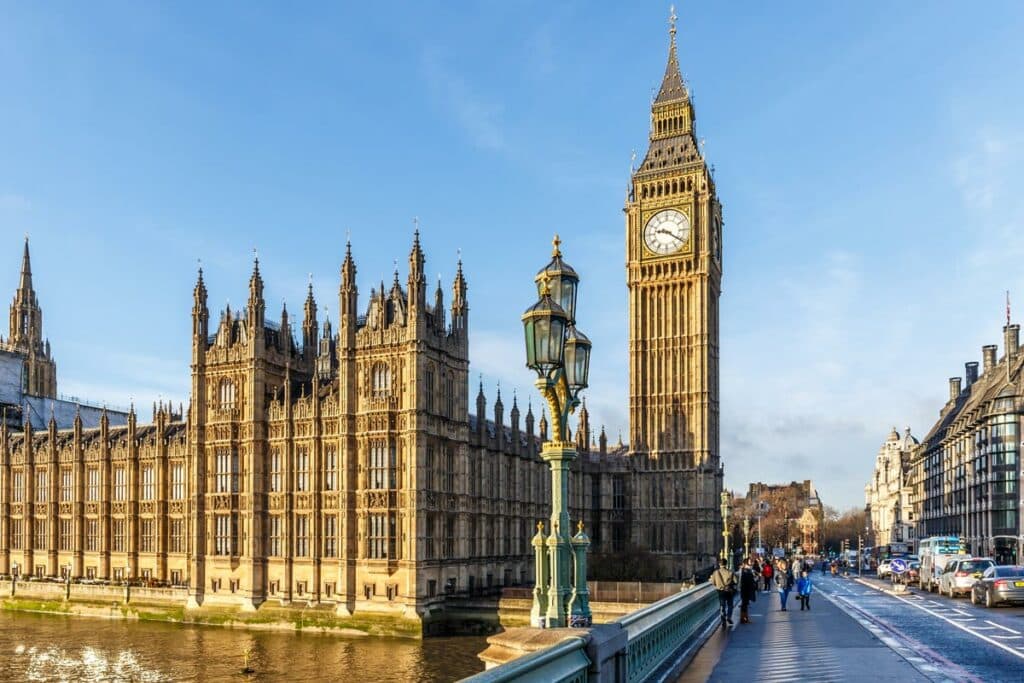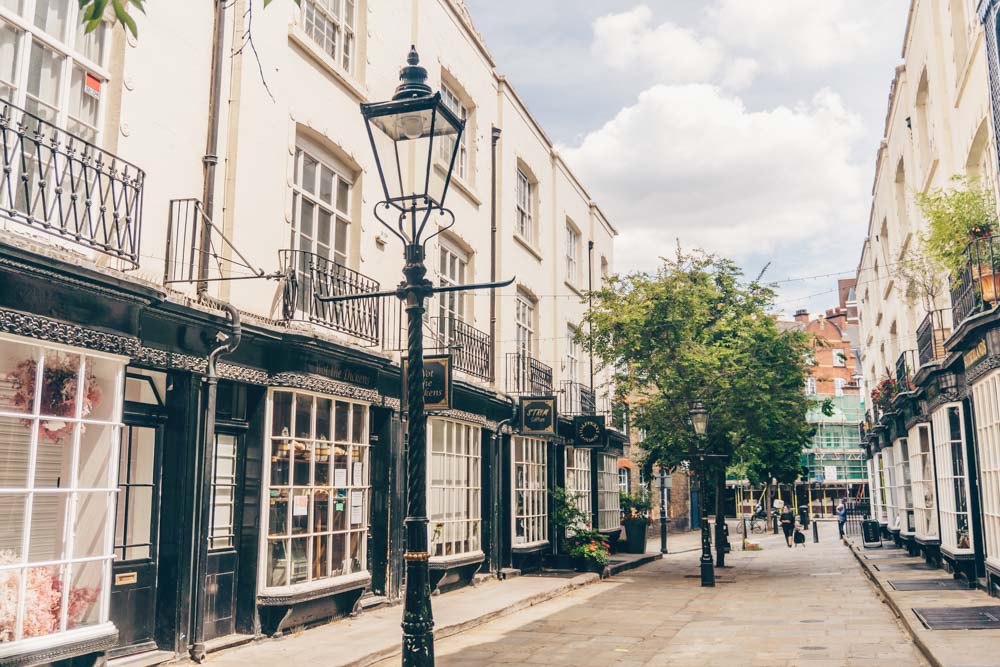London’s gruesome final stop for criminals of the sea, Wapping Execution Dock, holds a fascinatingly grim history. We dig deep to discover the story behind it all.
Words by Karen Olney
You’ve got to hand it to the city; London had a grisly reputation for capital punishment.
There wasn’t much room for redemption, and back then, almost all criminals were sentenced to death in one way or another. Even pick-pocketing could have an individual staring at the wrong end of a noose.
You may have heard notorious tales from the Tyburn gallows. But less known, and equally macabre, is the site of Wapping Execution Dock.
Shhh….we secretly love a bit of gory history. If, like us, it’s your guilty pleasure, read on.
Why Visit Wapping Execution Dock?
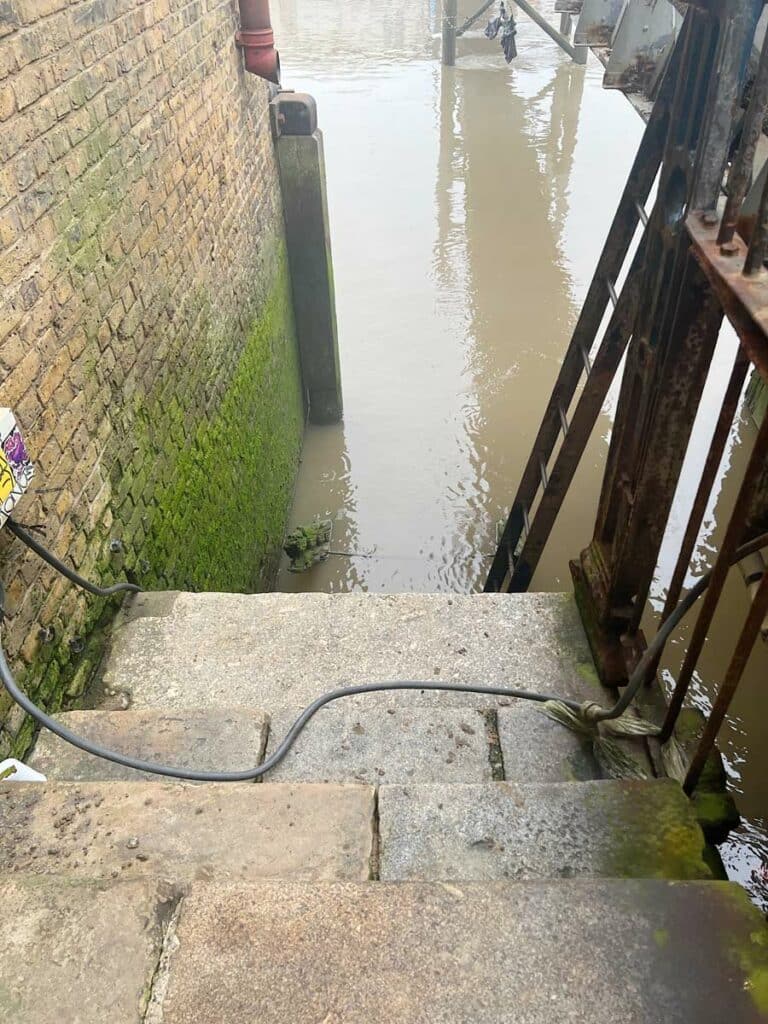
History buff or not, we recommend putting the Execution Dock in Wapping, London at the top of your must-visit list.
Although the exact location is sketchy, pounding the streets of Wapping and reliving the tales of bygone criminals certainly makes for a day out with a difference.
What’s more, you can combine your visit with a historical tour of the pubs in the area. The Prospect of Whitby has a replica scaffold outside, providing a handy excuse for a cheeky beverage.
Move on to visit the Town of Ramsgate with its infamous stairs to the riverbank. The narrow Old Wapping Stairs are a strong contender for the location of the Execution Dock. It was here that the scandalous Judge Jeffreys, who gleefully sent hundreds to the gallows, was captured.
The History of Wapping Execution Dock
From inspiring the tale of Treasure Island to the Marshal’s Death Dance, Wapping Execution Dock harbours a gut-churning history.
The Admiralty Built the Gallows to Frighten off Pirates
Why did they install these ghastly gallows? To put the fear of God into the crazed pirates causing anarchy on the high seas.
In a nutshell, maritime trade, at this point, was vital for the development of the modern world. Frequent episodes of unruly pirates hijacking vessels and stealing cargo threatened the economy, and serious action was required.
In 1536, King Henry VIII addressed the problem and introduced the Offences at Sea Act. This act put the wheels in motion to make piracy punishable by death.
Anyone who committed crimes on the seas would be brought back to London and tried by the High Court of Admiralty. These trials were infamously unfair as the criminals tended to be uneducated and unable to provide a decent defence.
It was the Alton Towers of its Day
Forget amusement parks; Wapping Execution Dock was where families went for a good time.
Here, criminals were taken from the notorious nearby prisons, Marshalsea and Newgate, and paraded across London Bridge, through to Wapping’s streets. This was all to the utter glee of the crowds who cheered on the prisoner’s fate.
The High Court Marshal, or his deputy, led the procession with a silver oar to symbolise their authority. Behind them, the prisoner would travel in a cart with a chaplain who pressed for a final confession.
The prisoner’s final stop was for a quart of ale at the Turks Head (now a French bistro), where prisoners could contemplate their gruesome fortune before the spectacle began. Many felt this gave the condemned an opportunity for confession.
Buzzing with excitement, crowds overflowed the streets and even chartered moored boats in the Thames for a prime view.
The Weekly Chronicle (7th May 1837) provides a glimpse of the thirst for death from the audience stating, ‘Thousands were riveted upon the swaying of a corpse with a kind of satisfaction’.
To top off the event, speeches or confessions were usually printed and distributed to an eager audience the following day.
Public Hangings Were a Warning
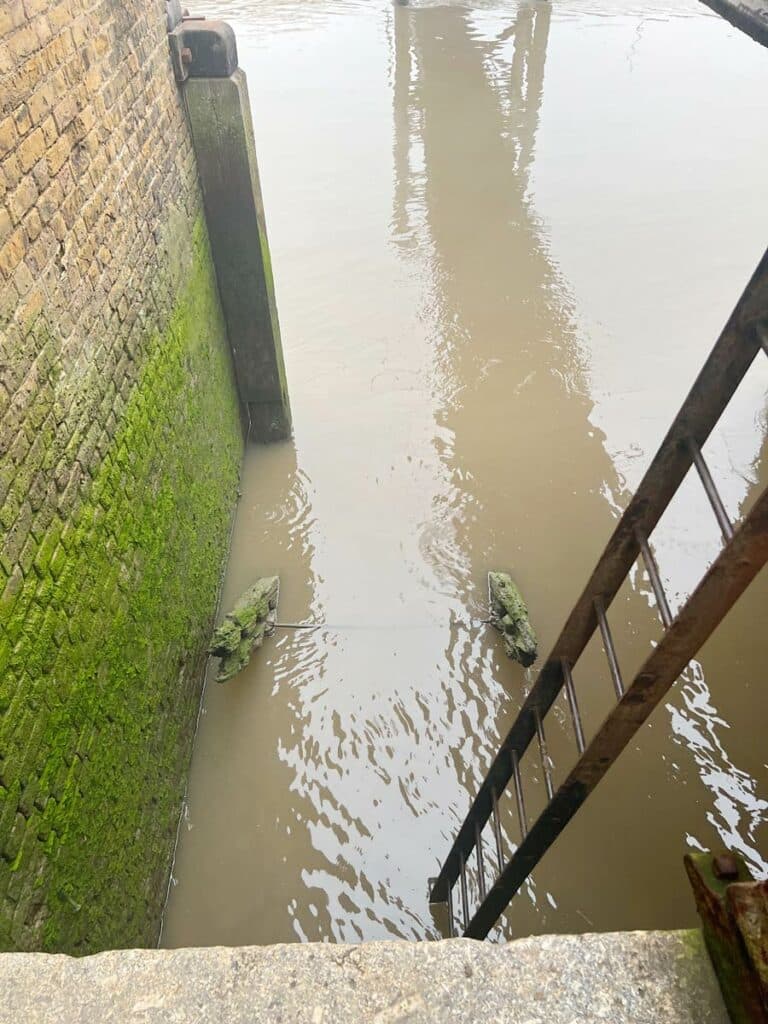
Pirates would refer to these public hangings as, ‘dancing the hempen jig’. They knew the consequences, but felt the reward outweighed the risks.
The practice of hanging corpses along the shore of the Thames was intended to serve a stark warning to other criminals of the sea.
Most bodies were removed after a day or two, but notorious criminals got a special kind of treatment. These were covered in sticky tar for preservation (which also helped to deter birds from pecking at the decomposing flesh) and left at prominent points along the Thames shore.
Any incoming boats were greeted with this grim sight, enough to warn others off from following the same treacherous path.
For locals, it would have been an eerie experience, walking along the Thames and witnessing corpses bound in iron cages, swaying in the wind.
One Prisoner inspired Treasure Island
Can you imagine anything worse than being hung at the gallows in front of a baiting crowd? Well, how about being hung twice?
This was the fate of Scottish-born William Kidd who was executed at the Execution Dock, Wapping in 1701. He was famous for being a respected sea captain who travelled the seas fighting piracy.
Back then, piracy was rife, and the government commissioned selected sailors to become privateers. These people were entrusted with defending American and English trade routes off the coast of North America.
One privateer, William Kidd, ended up a pirate himself, attacking and taking ships carrying valuable loot.
In 1700 Kidd was put on trial and found guilty of murder and piracy. During his execution, the rope snapped, and Kidd fell to the ground, resulting in his hanging for a second time. This time the execution was fatal, and his remains were displayed by the River Thames at Tilbury for three years.
The tale of William Kidd and his crossover from privateer to pirate became legend. Some felt he deserved sympathy, and rumours spread that he had treasures hidden throughout the land, inspiring the story of Treasure Island.
The Gallows Closed Their Doors in 1830
George Davis and William Watts had the unfortunate honour of becoming the final two criminals to be hung at the gallows on 16th December 1830.
Davis and Watts were convicted of piracy after seizing the Cyprus ship, near Tasmania. After that, the execution dock was closed, and the government sought to regenerate the Wapping Docks.
The Precise Location of the Wapping Execution Dock Is a Bit Iffy
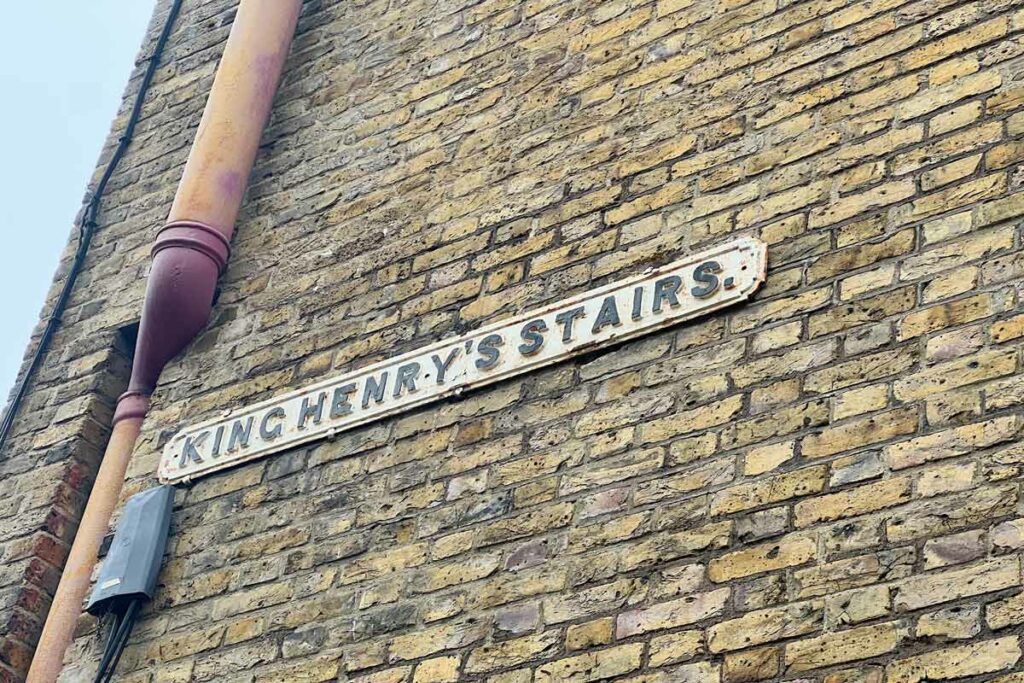
If you were hoping to set your sights on the scaffold remains, you’ll be disappointed. All traces of the Wapping Execution Dock are now long gone. No one truly knows where the gallows once stood, but that hasn’t stopped people guessing.
Serious contenders for the site range from The Prospect of Whitby pub, Wapping Old Stairs, to the King Henry’s Stairs.
Wander down to the site of Swan Wharf, and you will see an unexplained large ‘E’ on a building on the Thames side, another venue tipped to be the grim site. Either way, the location remains a mystery, but it’s an eerie tour worth exploring.
Wapping Execution Dock: Practical Information
Address: Execution Dock House, 80 Wapping High Street, Wapping E1W 2NE (or thereabouts)

